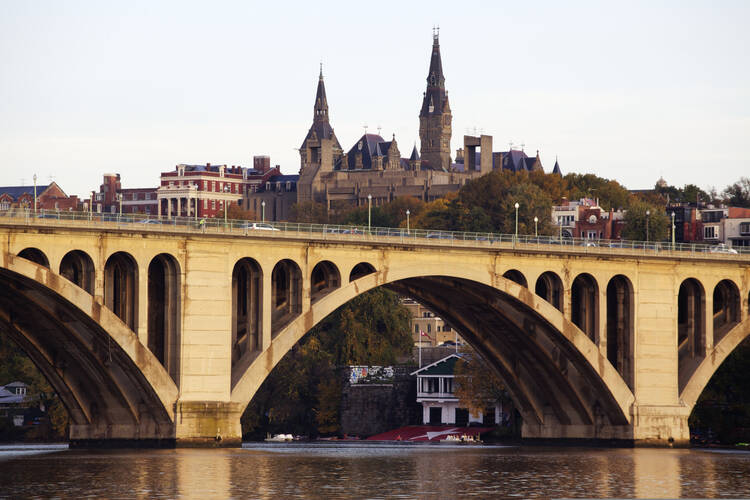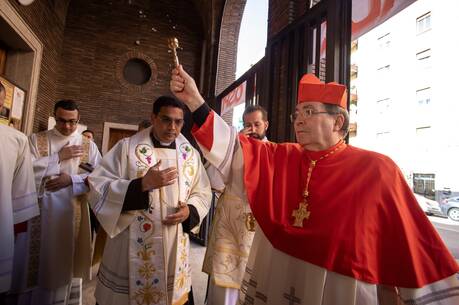What do institutions that benefited from the sale and exploitation black bodies owe the descendants of slaves? How should individuals tainted by their complicity in the United States' "peculiar institution" be remembered or memorialized?
These are questions all Americans must grapple with; but today at Georgetown University they are no longer simply being considered in the abstract.
The Georgetown Memory Project is an independent nonprofit organization founded by friends and alumni of the university to confront a dark chapter of the Jesuit institution's history: In 1838, Georgetown sold 272 slaves from Jesuit plantations in Maryland—men, women and children—to plantations in Louisiana, often breaking up families in the process.
The stated mission of the G.M.P. is fourfold:
- Identify the people sold in 1838
- Locate their living descendent
- Acknowledge them as members of the Georgetown family
- Honor their sacrifice & legacy
In April, The New York Times reported on the project and asked readers to make contact if they thought their ancestors were among the 272 slaves. Scores responded. Today in The Times, we read the stories of four of these descendants.
Charles Hill, 74, says his father told him that their family came from Maryland, but never mentioned the Jesuits. “He didn’t want to disturb our Catholic faith. He didn’t want to lose us.” And he didn't. Today, Mr. Hill is still a Catholic, “Knights of Columbus, fourth degree,” he says.
Sandra Green Thomas, 54, says she is still processing the new information. Her great great-grandmother, Betsy Ware Harris, was likely pregnant or a new mother when she was sold. “When I realized that, my heart just broke for her.”
Orlando Ward, 55, wants to look forward: “Let’s jump ahead and talk about reparations. How do you really value the damage that was done in a way that’s straightforward and fair?” Scholarships for descendants are part of the answer but so too is a reckoning for those responsible for the sale. “I think it’s important for both sides to be pointed out and memorialized, not villainized,” says Mr. Ward, “to begin to build a model for healthy dialogue.”
Rochell Sanders Prater, 55, sees the hand of God in the revelations about her ancestry: “I trust that this is a divine intervention. It’s a gift from God that can help heal this nation.” Which is not to say the rest of us are off the hook. When it comes to bridging the racial divide, Ms. Prater says: “I don’t want to have a dialogue about it. I want us to do something.”
These are just four stories. There are thousands of descendants alive today. Their voices are indispensable if this country is to “do something” about slavery’s ugly legacy: persistent and rising segregation in our schools; the mass incarceration of African-Americans; an unemployment in the black community more than double that of whites.
Georgetown has already taken one concrete step: Buildings named for William McSherry and Thomas Mulledy, the Jesuits primarily responsible for the sale of the 272 slaves, have been temporarily renamed Freedom Hall and Remembrance Hall. It is a small but significant first step. And, as Margot Patterson writes in her latest column, “[by] contending with their slave-owning history” Georgetown and other universities “are blazing a trail for American society to follow.”
Check out America’s coverage of the Jesuits and slavery:








